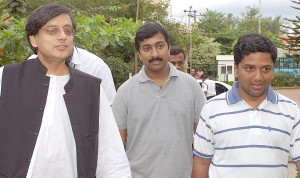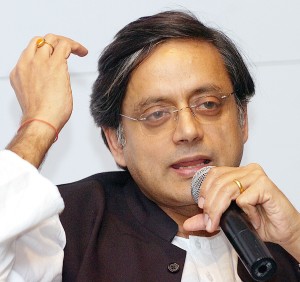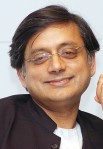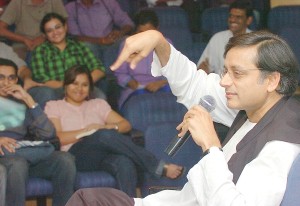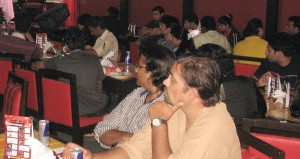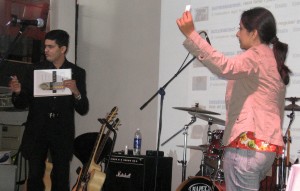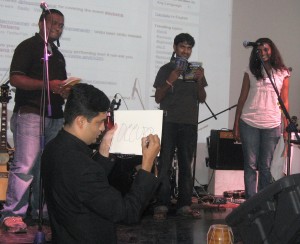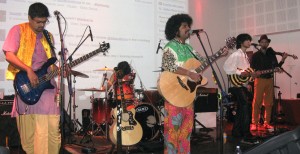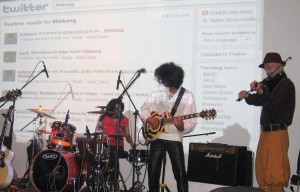(Crossposted from Kaleidoscope)
They may not be forever emailing, facebooking or tweeting; but they are grateful to the internet. A whole generation that grew up on radio is rediscovering their lost pastime, of listening to faraway radio stations. Thanks to live online streaming, shortwave radio freaks are smiling again. They are bookmarking stations on web browsers and listening in while working on their laptops.
The hobby is called DXing: D for distance and X for the distant radio station. The fun was in tuning into foreign stations, like Radio Cylone, Radio Netherlands, Voice of America, Radio Mosow, apart from of course, the BBC. There was a craze to collect QSL cards. (QSL is an abbreviation for reception reports in radio-telecommunication.)
After listening to a programme, shortwave enthusiasts wrote to the radio station about the programmes mentioning the frequency and quality of reception. As a token of appreciation, the station sent listeners a QSL card. There was competition among listeners for the number and variety of cards they collected. QSL cards are now vanishing. For example, BBC World Service does not send QSL cards. The emails about programmes and reception quality are passed on to the engineers, says the BBC.
The last two decades had put the radio on the death bed. Electromagnetic waves from the overhead mesh of TV cables and the neighbourhood mobile phone towers drowned out shortwave radio signals, and many radio station cut down on their shortwave transmissions. It was depressing, when nothing could be heard on the radio. With internet boom, many radio stations went online, bringing the unmistakably pleasant feeling of deja vu for radio buffs.
LIVE STREAMING
BBC has one of the richest collections of online audio-broadcasts; live streaming of Radio 1 began in 1996. In 2007, BBC iPlayer an online service for listening to previously aired shows was launched. Today, there are as many as 17 BBC stations online — Radio 1, 1extra, 2, 3, 4, 5, 5 live sports extra, 6, 7, Asian Network, World Service, and six regional radio stations like Radio Wales and Radio Ulster. And each of these has a wide variety of programmes. Besides, podcasts, BBC has a rich archive of news reports of landmark events and recordings of famous speeches.
Closer home, there are many Indian radio stations online. All India Radio’s News on Air provides its English, Hindi and regional language news bulletins in an mp3 format for listening in any time. VoiceVibes provides live streaming of VividhBharati programmes. Besides, it provides Hyderabad-based stations like Aakashavani Telugu, AIR Urdu, RadioCity, Red FM, RadioMirchi and Rainbow.
Raj, who administers the site says, “Radio on VoiceVibes is for those who are missing Hyderabad like me. Enjoy and feel at home.” By providing FM stations online, VoiceVibes has broken a technical geographical limitation: being a terrestrial transmission, FM stations can’t usually be accessed on a radio beyond around 50 km from where the station is located. With no such problems, online streaming is a boon for people away from home.
Space For Radio is another unique online venture. With a host of RJs, it provides a variety of Malayalam programmes 24×7: devotional songs, old and new film songs, celebrity interviews etc. Unlike other online radio station, the moment you open the Space For Radio site, streaming starts, there’s no need to click on any link or button, making it convenient for the listener. “This is the first online radio in the world run by women crew; and we have more than 5 lakh listeners all over the world, within one year,” says its administrator. Recently, they enabled access to the online station on mobiles.
How comparable is online radio with its good-old offline version? The quality is infinitely better. But Googling a radio station and clicking on a few links is no fun compared to sitting up late in the evening, turning the radio nob, finding a foreign station and even slanting the radio a bit for better reception! Of course, shortwave radio freaks are glad they are able to listen to some of their favourite programmes and their presenters.
LInks:
Foreign radio stations:
BBC – http://www.bbc.co.uk/radio/
Voice of America – http://www.voanews.com/
Fox Radio News – http://radio.foxnews.com/
National Public Radio – http://www.npr.org/
Radio Netherlands – http://www.rnw.nl/english
Radio Australia – http://www.radioaustralia.net.au/
Radio Canada International – http://www.rcinet.ca/
Deutsche Welle (Radio Germany) – http://www.dw-world.de/
Radio France International – English – http://www.english.rfi.fr/
Indian radio stations
All India Radio News – http://newsonair.com/
Vivdh Bharati – http://www.voicevibes.net/
Malayalam – http://spaceforradio.com/
Online radio directories
http://radiotime.com/
http://www.live365.com
http://www.onlinefmradio.in/

